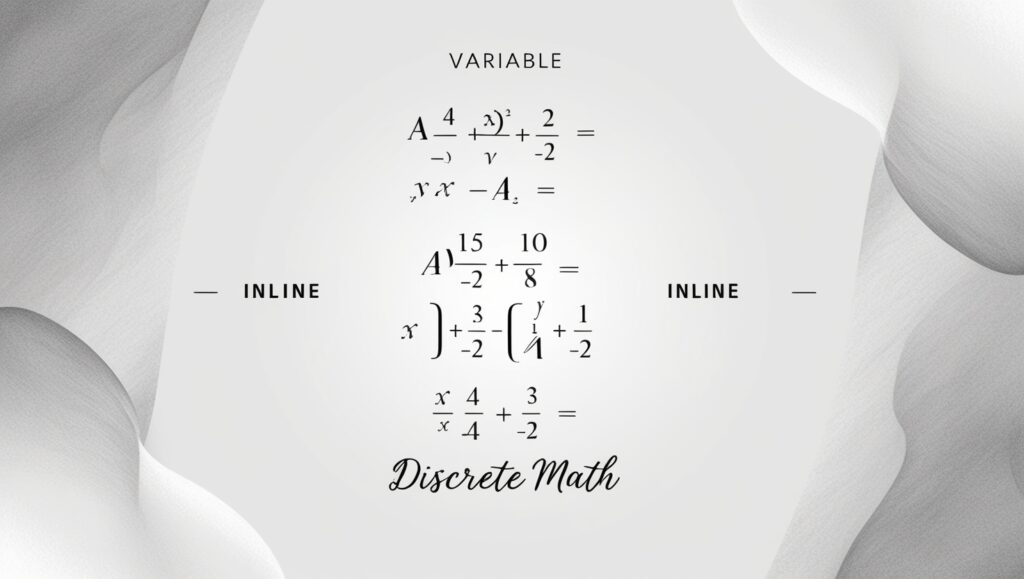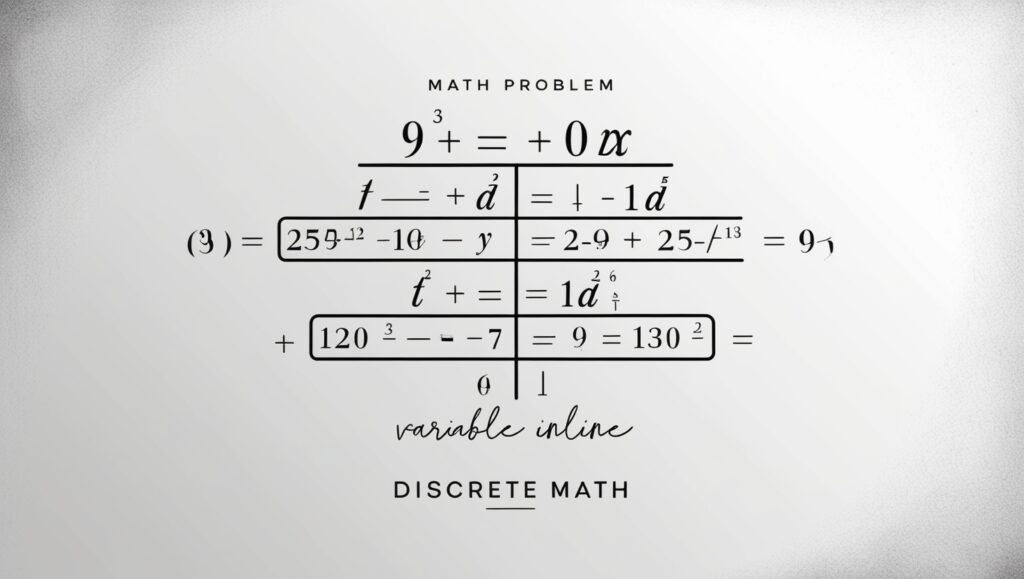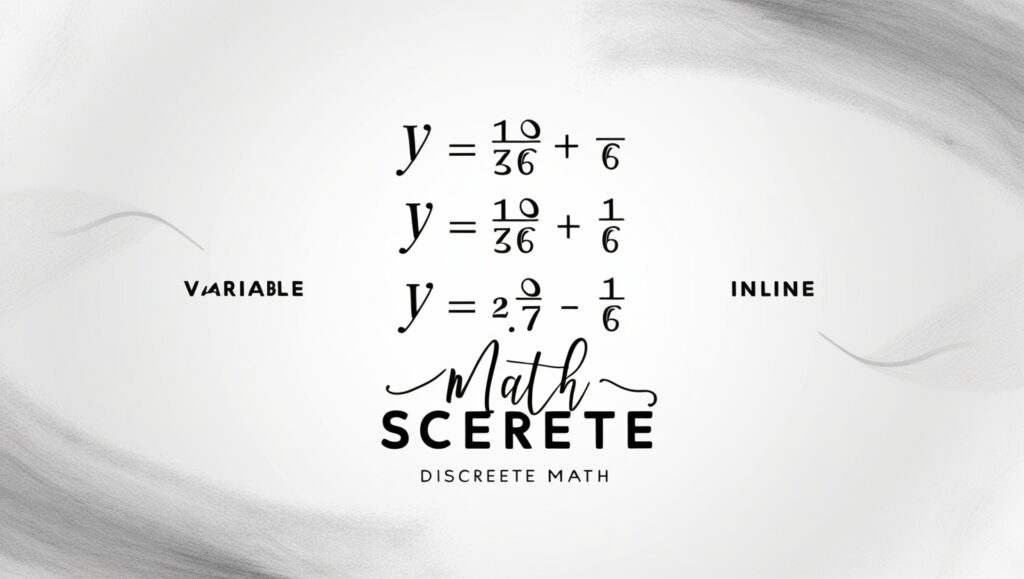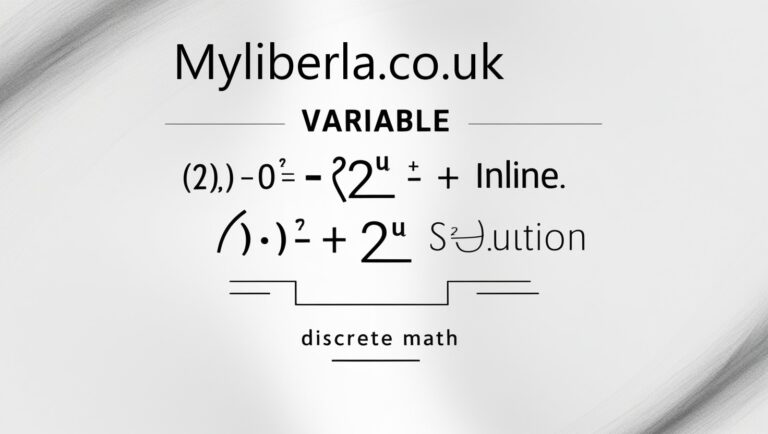Discrete mathematics is a fundamental branch that deals with objects that can take on only distinct, separate values. In recent years, variable inline discrete math has gained attention in academic and practical applications. This article explores the intricacies of variable inline discrete math, its significance, applications, and how it can be utilized effectively in various fields.
What is Discrete Math?
Discrete mathematics encompasses many topics, including combinatorics, graph theory, logic, and algorithms. Unlike continuous mathematics, which deals with real numbers and smooth curves, discrete math focuses on countable, distinct elements. This makes it particularly useful in computer science, cryptography, and network theory, where discrete structures such as graphs and sets play a crucial role.
Critical Areas of Discrete Mathematics
To fully understand variable inline discrete math, it’s essential to grasp the critical areas within discrete mathematics:
It provides tools for analyzing the possible configurations and selections of finite sets.
Graph Theory: Graph theory studies structures of nodes (or vertices) connected by edges. It is vital for understanding relationships in networks, including social networks and communication systems.
Set Theory: Set theory deals with collecting distinct objects, providing a foundational framework for mathematics. It takes into account investigating ideas like associations, convergences, and subsets. Rationale: Discrete science consolidates rationale, zeroing in on recommendations and their connections. It underpins algorithm design and the development of computer programs.
Calculations: Calculations are a bit-by-bit methodology or recipe for taking care of issues. Discrete mathematics provides the theoretical foundation for algorithm efficiency and optimization.
What is Variable Inline Discrete Math?
Variable inline discrete math is a method of applying variable elements directly within discrete mathematical structures. The term “inline” suggests that these variables are integrated seamlessly into existing frameworks or systems. This concept benefits programming, where discrete mathematical principles are applied to manage data, optimize algorithms, and enhance computational efficiency.
The Role of Variables in Discrete Math
Variables are fundamental to mathematics as they represent unknown or changing values. In discrete math, variables can take on a range of distinct values, allowing for flexibility in problem-solving. This adaptability is crucial for:
Modeling Real-World Scenarios: Variables can represent different entities, such as nodes in a graph or elements in a set. This modeling helps to effectively simulate real-world problems.
Creating Algorithms: Variables allow algorithms to handle dynamic data inputs, making them versatile for various applications. For instance, a search algorithm can adapt to different data structures based on variable inputs.

Understanding Relationships: By employing variables, discrete math enables a deeper understanding of relationships between different mathematical entities, aiding in analysis and decision-making processes.
Applications of Variable Inline Discrete Math
The application of variable inline discrete math spans multiple disciplines, including computer science, economics, engineering, and. We should investigate a portion of the conspicuous applications:Let’s explore some of the prominent applications:
Computer Science
In computer science, variable inline discrete math is essential for algorithm design, data structures, and programming languages. Variables can be used in recursive algorithms, where a function calls itself with different variable values until a base condition is met. This method is prevalent in sorting algorithms, search algorithms, and dynamic programming techniques.
Cryptography
Cryptography relies heavily on discrete mathematics, particularly variable-inline approaches. Variables can represent keys or cryptographic elements, allowing for the formulation of secure communication protocols. Using discrete logarithms, prime numbers, and finite fields exemplifies how variable-inline discrete math secures data transmission.
Operations Research
Operations research utilizes discrete mathematics to optimize complex decision-making processes. Variables are used to model different scenarios in linear and integer programming, helping to find the most efficient solutions to resource allocation problems.
Network Theory
In network theory, variable inline discrete math is vital for analyzing and optimizing network structures. Variables can represent bandwidth, latency, and node capacities, enabling the development of algorithms that enhance network performance and reliability.
Game Theory
Game theory employs discrete mathematics to study strategic interactions among rational decision-makers. Variables represent different strategies, payoffs, and outcomes, facilitating the analysis of competitive behaviors in economics, politics, and social sciences.
Techniques for Implementing Variable Inline Discrete Math
Implementing variable inline discrete math involves several techniques that enhance utility and effectiveness. Here are some standard methods:

Dynamic Programming
Dynamic programming is a powerful technique that uses variables to break down complex problems into simpler subproblems. By storing the results of subproblems, dynamic programming can optimize recursive algorithms, reducing computational time.
Recursive Functions
Recursive functions utilize variables to call themselves with varying inputs. This approach simplifies problem-solving by breaking tasks into smaller, manageable parts. For example, calculating Fibonacci numbers can be efficiently done using recursive methods.
Simulation and Modeling
Simulation techniques often use variable inline discrete math to model complex systems. By defining variables representing different components, simulations can predict outcomes based on various scenarios, aiding decision-making processes.
Statistical Analysis
Statistics often employs discrete mathematics to analyze data sets. Variables can represent different attributes, allowing for calculating probabilities, averages, and other statistical measures. This analysis is crucial in marketing, healthcare, and finance.
Challenges in Variable Inline Discrete Math
While variable inline discrete math offers numerous advantages, it also poses several challenges:
Complexity
As the number of variables increases, mathematical models can become exponentially more complex. Managing this complexity requires careful planning and robust computational resources.
Interpretation of Results
Multiple variables can complicate the interpretation of results. Ensuring that conclusions drawn from models are meaningful and accurately represent the underlying data is crucial.

Algorithm Efficiency
While variable inline methods enhance versatility, they can also lead to inefficient algorithms if not correctly optimized. Striking a balance between flexibility and efficiency is essential for effective problem-solving.
Conclusion
Variable inline discrete math is a powerful tool in various fields, facilitating the modeling and analysis of complex systems. Its applications range from computer science and cryptography to operations research and game theory, demonstrating its versatility and importance. As technology advances, the significance of discrete mathematics and its variable elements will only grow, opening new avenues for research and innovation.


